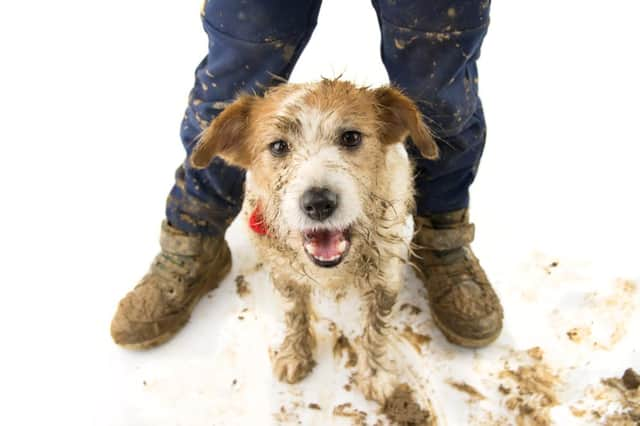How often can I bath my dog? PDSA charity vet answers questions from pet owners
This article contains affiliate links. We may earn a small commission on items purchased through this article, but that does not affect our editorial judgement.


In this column, a PDSA vet answers questions from pet owners:
Q.My dog gets quite muddy when we go on long walks, but I’ve heard that pets shouldn’t be washed too regularly. How often should I bathe him?
Advertisement
Hide AdAdvertisement
Hide AdA.Frequent bathing can remove beneficial oils from the fur so unless dogs have been diagnosed with skin problems that require frequent medicated shampoo washes, it’s not ideal to do an all over shampoo more than monthly. However, it’s fine to bath them in between this if they get very dirty or smelly, especially if they’ve walked through fields with animal faeces – choose a doggie shampoo, as human alternatives could irritate. Following muddy walks, rinse well with warm water until the water runs clear. Pat their coat dry with a towel afterwards so you don’t rub any remaining grit into their skin, then when they’re dry, give them a good brush.


Q.I’ve bought my cat a scratching post but she won’t use it and instead uses the corners of my new sofa. How can I encourage her to use the post instead?
A.Scratching is normal behaviour for cats, helping them condition their claws and communicate with other cats, but it can be frustrating for us! Make sure she has a variety of vertical and horizontal scratching posts in various locations, so she’ll be less tempted by your sofa. Ensure the scratching posts are high enough, and sturdy – your cat should be able to fully stretch up on her hind legs, and the post should support her full weight when she leans against it. Spray catnip onto the scratch posts to get her attention and put one post next to your cat’s sleeping area. Limit her access to the room where the new sofa is while she gets used to her scratching posts.
Q.I gave my Yorkie pup a strawberry yesterday, now she seems to be scratching and has a red rash. Is this an allergy, and what can I do to help her?
Advertisement
Hide AdAdvertisement
Hide AdIt’s hard to tell whether your dog’s itchiness was caused solely by an allergic reaction, so I’d take her to your vet for a check-up as soon as possible. If it is an allergy, she may need some medication to treat her symptoms. Your vet will also be able to rule out other possible causes, such as parasites, or a skin infection. Strawberries don’t usually cause a problem for dogs.


Q.We’ve just moved into a new home with our cat and dog, but I’m worried about them getting fleas. How do you prevent pets from getting fleas in a centrally-heated house?
Flea eggs and pupae can lay dormant in the environment for a long time and moving into an empty house can stimulate them to wake up in response to central heating and vibrations. It’s important to treat new homes with a long-acting flea spray before you move in, and continue to treat your home regularly. If you’re not sure which products to use, check with your vet for the best pet-safe options.
For more details on the charity, go to www.pdsa.org.uk